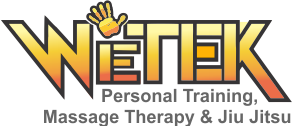Neck pain from Jiu Jitsu (causes and how to fix ) :)
A few muscle groups which really get sore and overworked during Jiu Jitsu training are the Suboccipitals. Let’s take a look at why that is, and which movements cause it. Check out this quick read and gain a better understanding of why this might cause you pain from all the training.
Jiu Jitsu is a detail oriented game, quick observation of the moment is key. Observation done with the whole body, involves many fine movements of the small muscles in the back of the neck. There are many, let us discuss the Suboccipitals which Originate at the C-1 and C-2 Spinous and transverse processes. They are the deepest muscles of the posterior neck. They are involved in stabilizing the axis and atlas, and creating intrinsic movements such as rocking, and tilting of the head. Other movements such as rotating the head to the same side, and laterally flexing the head to the same side are also relevant .
Here is another interesting thing about one of the muscles called the Rectus Capitis Posterior minor. It attaches not only to the occiput , but also to the dura mater, the connective tissue that surrounds the spinal cord. Because of this connection, if the muscles are overworked they may cause headaches by disrupting normal cerebrospinal fluid fluctuations and hence the functioning of the vertebral artery and sub occipital nerve.
In Conclusion, one may see that constant playing guard, or head pressure along with many other movements will cause much tension to these muscle groups. This will affect other parts of the neck and back which will for certain cause a ripple effect.
A Suggestion: Get a Theracane, which is a self help tool which may be ordered on amazon, it is easy to use and may greatly reduce tension through correct pressure placement in a small area . Also, use a lacrosse ball on various parts of the spine.
Stay Safe and train smart,
Until Next time ,
Stan with Wetek Massage Therapy and Personal Training

Recent Comments